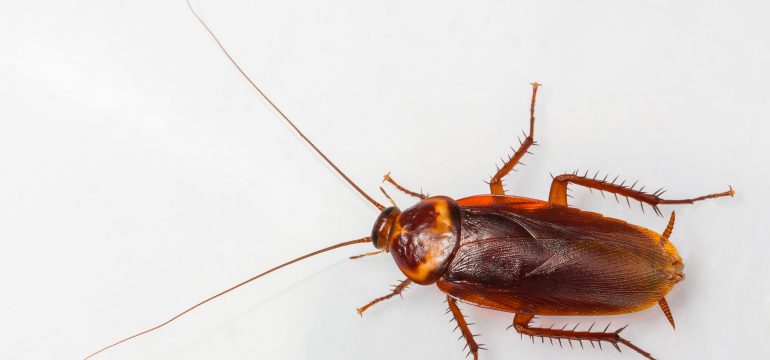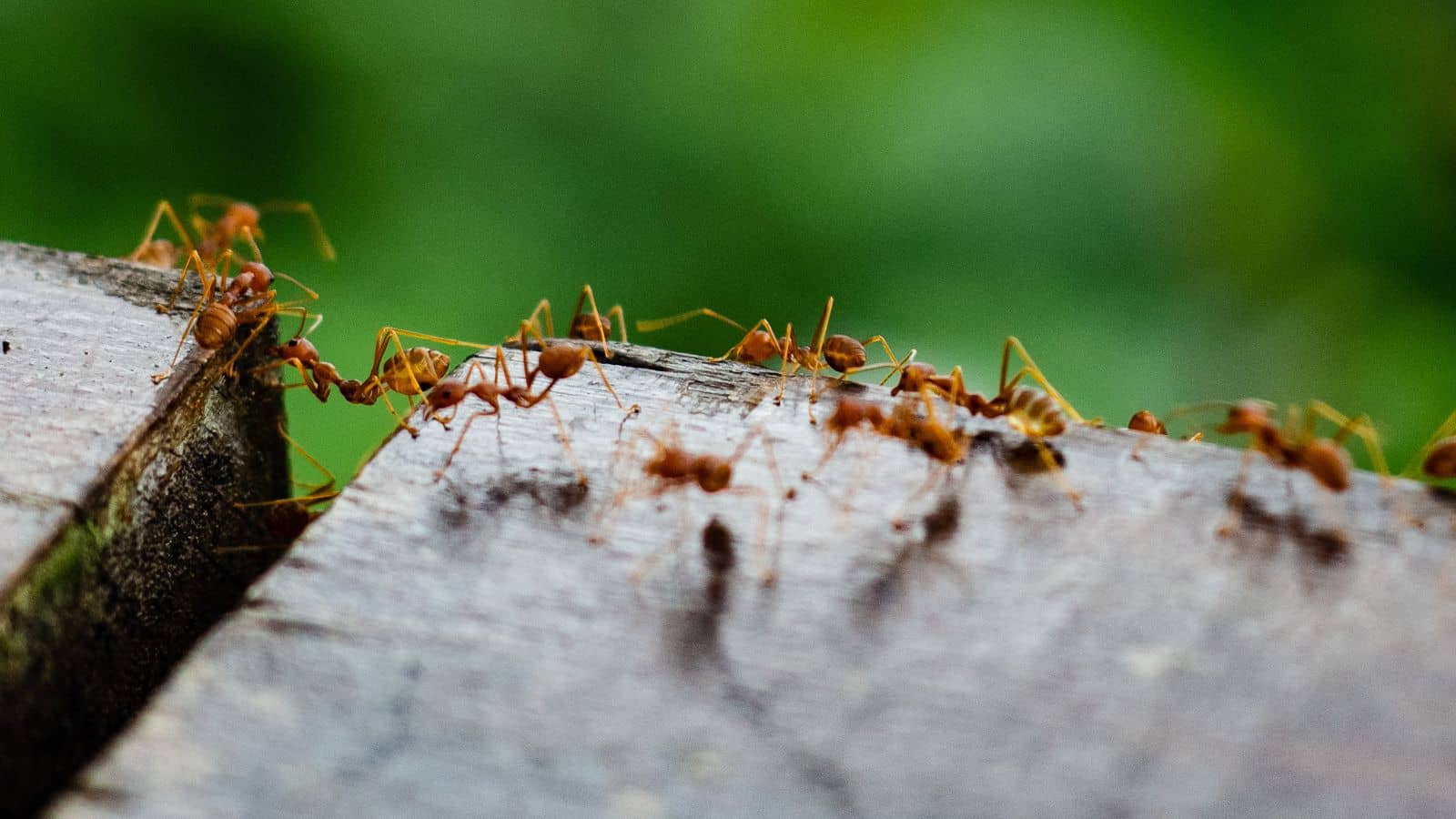The Turkestan cockroach is the name of a new pest in town. There has been an increase in sightings of a pest that was once thought to be an exotic species that was rarely found in homes.
How much has the number of Turkestan cockroaches increased in recent years? Three or four years ago, the Alameda County Vector Control Services District reported receiving no calls involving Turkestan cockroaches. The agency has received 33 calls in the last 18 months about Turkestan cockroaches, which are distinguished by their rusty red color and the fact that they are primarily outdoor pests.
What is a Turkestan Cockroach?
The Turkestan cockroach (Shelfordella Lateralis) also spelled Turkistan, is an invasive species found throughout the southwest.
The Turkestan cockroach is sold as food for pet reptiles. It is quickly replacing the ever-present oriental cockroach. Both roaches tend to live outdoors in the same type of urban environment. However, the Turkestan cockroach breeds faster, leaving entomologists to believe the increase in numbers is why this roach is taking over our urban outdoors.
Another name for Turkestan roach is “red runner” or “rusty red” cockroach. In addition, it looks similar to the oriental roach except the female Turkestan has cream-colored markings and the male Turkestan appears slimmer than the male oriental roach.
Turkestan cockroaches prefer to live outside, but they can be found indoors during their peak population season in the summer. Cockroaches found indoors are frequently males that were drawn in by lights and flew into the structure.
Wood and debris piles, irrigation and water meter boxes, crevices in the pavement or rock walls, and outdoor drainage pipes are all common habitats for Turkestan cockroaches around homes. They are also common in public storm drains and sanitary sewers, which provide the cockroaches with the dark, moist hiding places that they prefer.
Turkestan cockroaches live and breed outside, but they can enter homes in search of water. They cannot, however, survive indoors. You may find them upside down and dead in indoor spaces such as garages or near entryways, but rest assured that Turkestan cockroaches will not establish and thrive in indoor environments.
Turkestan cockroaches, like all outdoor pest cockroaches, are considered both serious nuisance pests and (potentially) public health pests due to their ability to transmit disease-causing pathogens. The most obvious signs of a Turkestan cockroach infestation are seeing them flying around lights at night and discovering them in their preferred habitats.
Where Does The Turkestan Cockroach Come From?
Turkestan cockroaches are believed to have originated in Central Asia, making their way to America via military personnel and equipment. This species was first found in 1978 at Sharpe Army Depot in Lathrope, CA. Like oriental roaches, Turkestan roaches embrace the city life by making their home in water meters, irrigation systems, and electrical boxes.
Additionally, they live in cracks of concrete and hollow block walls as well as leaf litter, ground cover, compost piles, and potted plants. In tropical climates, Turkestan cockroaches are known to be an indoor pest.
Turkestan Cockroach Life Cycle
There are three developmental stages of the Turkestan cockroach; egg, nymph, and adult. However, Turkestan cockroaches have a shorter developmental period in comparison to Oriental cockroaches and the females produce considerably more eggs than the Oriental cockroach females as well.
Each female and her offspring can produce nearly 200 cockroaches in one year. Development from a newly emerged nymph to adult can take from 1 to 2 years or more.
In many locations, the Turkestan roach has been able to out-compete and replace the Oriental roach population given their biological characteristic differences.
Why Do I Have Turkestan Cockroaches In My House?
You may wonder what draws these unwanted invaders to your home. The simplest answer is “food”. Most homeowners will keep their homes free of discarded food and keep their home goods sealed. But, that may not be enough.
Roaches require starch and protein in their daily diet and if they can’t get in your kitchen, they will get it in other places. Paper is a favorite source of food which includes magazines, wallpaper, cardboard, and books. Turkestan roaches eat other things as well, like glue, some cloths, and even human hair and nails.
During the peak summertime when population and the weather are at the highest, the Turkestan roaches will come inside, but thankfully they typically stay outdoors.
Males are most likely to be the ones inside homes, as they are attracted to lights and wander into homes and businesses. Like most cockroaches, Turkestan roaches are most active after dark.
Pest Control Tips for Turkestan Cockroaches
- Effective control requires good sanitation, particularly around outdoor trash storage areas, as well as exclusion from the home.
- If possible, reduce sprinkler irrigation. Reduce water availability by repairing plumbing and irrigation leaks. Reduce moisture around your home’s perimeter by ensuring proper soil grading, and avoid planting within one foot of the foundation. In these areas, consider using gravel or bare soil instead of mulch or ground covers.
- Leave pet food outside, especially at night. Keep trash in containers with tight lids and clean outdoor trash storage areas on a regular basis to remove food residues. Remove any trash and stored items from around the outside of your home, such as stacks of lumber or firewood.
- To improve light and air circulation, trim shrubbery around your home and remove leaf litter. Cracks in paved walkways, masonry features, and other hardscape crevices where cockroaches may hide should be identified and sealed.
How do I Get Rid of Turkestan Cockroaches?
When dealing with a Turkestan cockroach infestation, the best thing to do is contact your local pest control company ASAP.
It takes a professional to get them under control once an infestation has occurred. However, homeowners can prevent both Turkestan and oriental roaches by making sure there´s no standing water on the property.
Cockroach Inspection, Control & Removal in Sacramento, California
Finally, homeowners know they have an infestation because these roaches are not shy, and fly around at night time, especially being drawn in by lights. In other words, Turkestan cockroaches can be very difficult to control once they have entered in or around your home.
Professional expertise is your most effective option to remove this infestation. If you are invaded by Turkestan or other types of cockroaches
Do you have any concerns about Turkestan Cockroaches invading your home? Call Official Pest Prevention today!
Official Pest Prevention is equipped to handle any infestations you may have. Whether you live in a commercial area or a residential one, if you say hello to us, you’ll be saying goodbye to those pesky bugs.
If you have any questions at all about our highly-rated services, then please feel free to contact us. We’re always eager to help out.
Official Pest Prevention is a family-owned, licensed pest control company celebrating 20 years serving over 100,000 satisfied customers in five area codes throughout Northern and Central California. Starting with a few contacts, and only four full-time employees, our small company has grown into an organization that today employs over 100 people, maintains a fleet of 75 vehicles, and has serviced over 100,000 Northern California households. This tremendous growth has come from loyal customers, who have recommended our work to their friends, family, and neighbors.
We are a full-service pest control company. Whatever your pest problem, we have a solution. Our goal is to make your property pest-free. Guaranteed. Contact us online or by phone (877) 711 2847 – for immediate assistance. Same-day bookings and flexible payment plans available – because pest invasions wait for no one.







